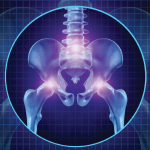TR: Across medicine as a whole, which areas are most ripe for improvement with regard to these topics?
Dr. Buchbinder: I can start by explaining some of the ways that overdiagnosis—often leading to overtreatment—may take place. Remember, overdiagnosis occurs when someone is given a diagnosis that’s technically correct but won’t benefit them and might cause harm. Recently, we have been interested in identifying ways of detecting and quantifying overdiagnosis.7,8
Healthy people are often screened for disease, as with cancer screening. We know that a proportion of cancers identified by screening are overdiagnoses, including common ones like breast and prostate cancer. In rheumatology, overdiagnosis occurs mainly when people with minor symptoms are investigated unnecessarily and an abnormality is falsely assumed to be the cause of these symptoms (e.g., a meniscal tear in the knee).
Overdiagnosis may also occur when a disease definition is expanded, such as the change in the definition of gestational diabetes that resulted in many more pregnant women receiving the diagnosis and having more testing and treatment—without a change in outcomes for either mother or baby.9 Overdiagnosis can also arise when risk factors for a disease are labeled as diseases in their own right (e.g., osteopenia) or when a new disease is created (e.g., sarcopenia, which now has its own ICD code). Risk factors, such as osteopenia and sarcopenia—which are part of the aging process—are okay to recognize and try to reduce with increased physical activity; the problem is when this provides a wide market for new therapies. In many of the above examples, there is good intent, but not enough consideration of unintended consequences.
TR: Within rheumatology, specifically, how do these topics manifest in clinical practice?
Dr. Buchbinder: Rheumatologists routinely do very good work in the diagnosis and management of [such] conditions [as] inflammatory arthritis. Much of my work has focused on low-value care related to regional musculoskeletal conditions.
Some of the problems arise due to overtesting. One example is unnecessary imaging, which occurs for many musculoskeletal complaints, including pain in the back, shoulders, neck and knees. Abnormalities that actually may be normal for a patient’s age are detected, and it is then incorrectly assumed that these abnormalities are the cause of the problem. This leads to a cascade of overtreatment. In fact, even having a label or diagnosis (e.g., meniscal tear) can be harmful, such as by causing unnecessary anxiety.


